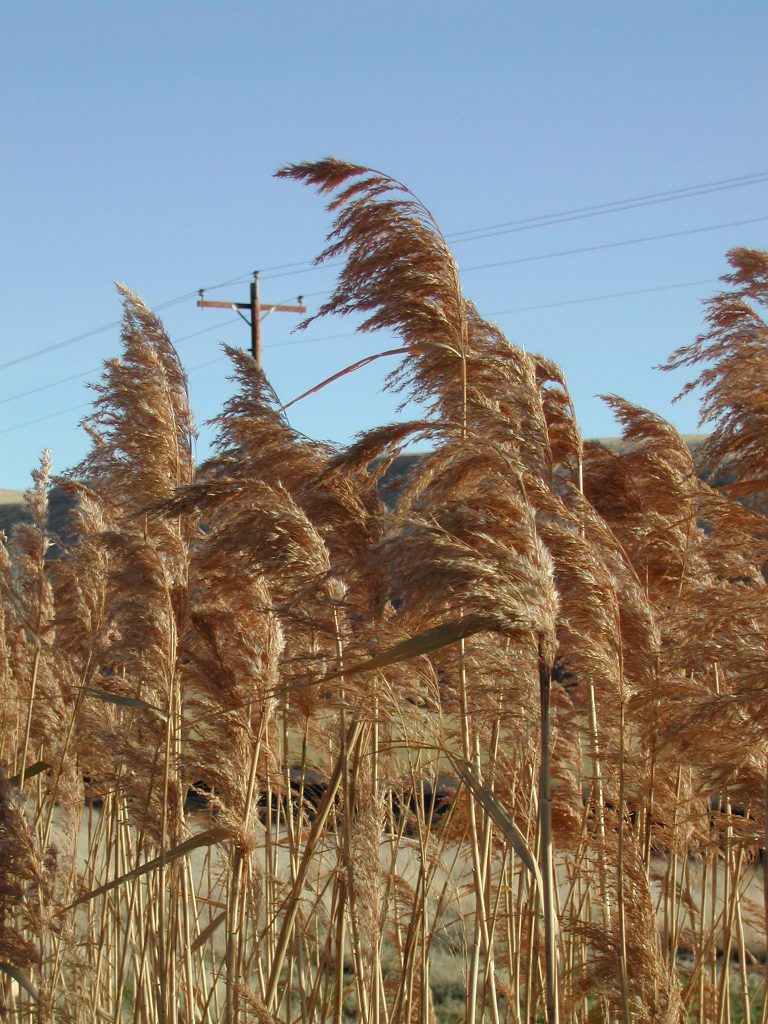Scientific name: Phragmites australis
What Is It?
Common reed, also known as phragmites, is a large perennial grass or reed with creeping rhizomes. It typically grows in or near wetlands but also may be found in sites that hold water, such as roadside ditches and depressions. Common reed forms dense stands, which include both live stems and standing dead stems from previous years. The plant spreads horizontally by sending out rhizome runners, which can grow 10 or more feet in a single growing season, rapidly crowding out native grasses.
Is It Here Yet?
Yes. Extensive stands exist in both eastern and western Washington in marshes and along river edges and shores of lakes and ponds.
Why Should I Care?
The non-native genotype of Phragmites australis can colonize a wetland, often forming dense stands and displacing other plants. It can decrease the amount of sunlight that reaches the water. Water quality deteriorates when water flow or circulation is adversely affected by this species. An alteration to the wetland composition and function can ultimately displace wildlife.
How Do We Stop It?
Do not purchase, plant, or trade this species.
What Are Its Characteristics?
- Common reed is a perennial wetland grass that is able to grow to heights of 15 feet or more.
- Leaves are 8-16 inches long, 2/10 to 1.5 inches wide.
- Leaf blade is smooth and lanceolate, which tapers from a rounded base toward its top; lance-shaped.
- Its hollow stem may reach 12 feet tall and has a rough texture.
- The flowers are dense, silky, floral spikelets and grow from 1-16 inches long. These feathery plumes are purplish in color and flower in late July and August.
How Do I Distinguish It From Native Species?
Non-native common reed may be confused with native populations of phragmites. Native genotypes are less dense and the stems are thin and shiny. Native phragmite flowers are also less dense.
Additional Photographs





